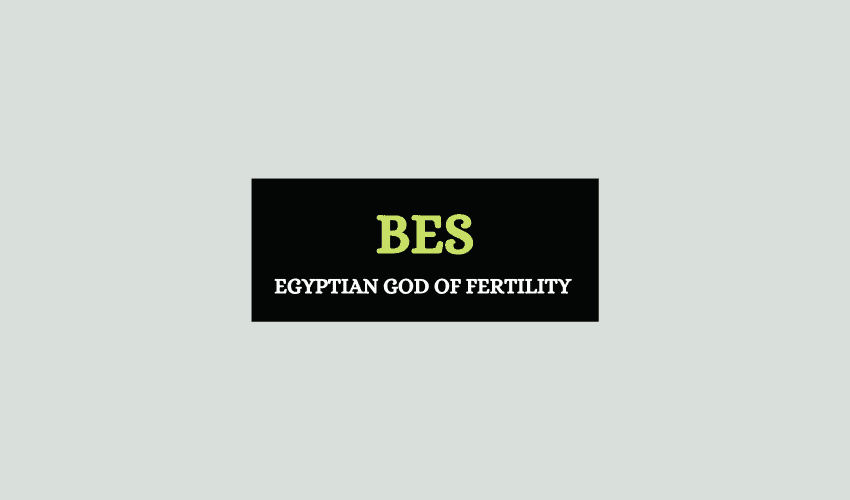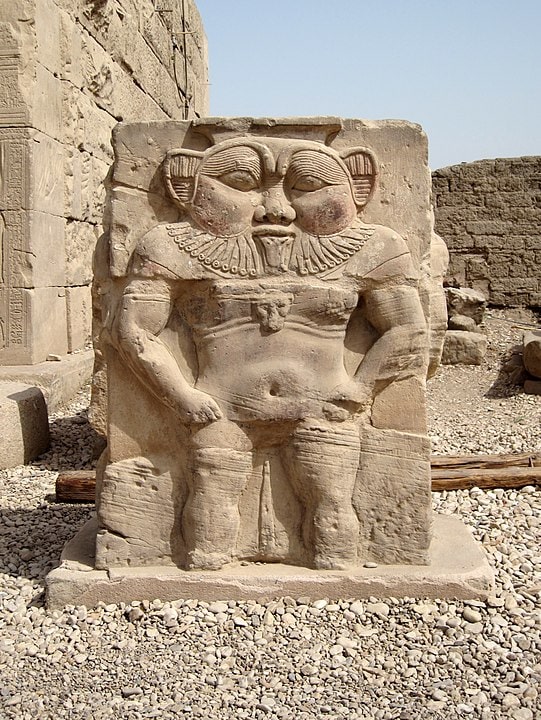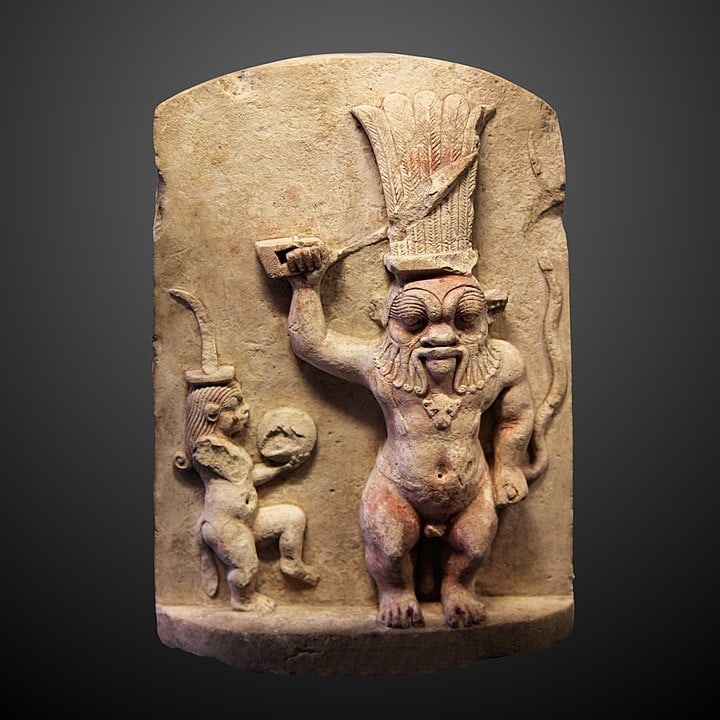
Table of Contents
The name Bes referred, in Ancient Egypt, not to a single god but to a number of gods and demons, who were responsible for guarding fertility and childbirth. Bes protected households, mothers, and children from disease and evil spirits. In later myths, Bes came to represent positive energy and goodness. Let’s take a look at the complex god of fertility and his role in Egyptian mythology.
Origins of Bes

Historians have been unable to trace the exact roots of Bes, but some say the god may have originated in Nubia, Libya, or Syria. Others dispute this theory and deduce that Bes was derived from other Egyptian gods of fertility. Bes’ female counterpart was Beset, and she had the task of keeping away ghosts, demons, and spirits. There are accounts of Bes since the Old Kingdom, but it was really during the New Kingdom that his worship became widespread in the land of Egypt.
Characteristics of Bes
In early Egyptian mythology, Bes was portrayed as a powerful and mighty lion. After the Third Intermediate period, however, he took on a more human form, with large ears, long hair, and a beard. He held a rattle, a serpent, or a sword in his arms to symbolize defense and protection. His most recognized form is that of a dwarf-like bearded man with a large head, and in most of these depictions, his mouth is open to show a very long tongue.
After the New Kingdom, his attire comprised a leopard skin robe, and after he began to be worshipped by the Persians, was depicted in Persian attire and headdress. As he was considered a god of protection against snakes, he would frequently hold snakes in his hands, but he would also be shown carrying musical instruments or weapons such as a sharp knife.

Bes as a God of Fertility
Bes aided the Egyptian goddess of childbirth, Taweret, by protecting and guarding new-borns from evil spirits. He also helped Taweret by opening up the mother’s womb and preparing her for childbirth.
Across Greek and Roman Egypt, there were birth houses known as ‘mammisi‘ or Bes’ chambers, that treated fertility issues. Egyptian women would often visit the house if they had difficulties in giving birth. These houses, built inside temples, would be decorated with nude images of Bes and Beset to simulate sexual energy and fertility in the women.
Some of these chambers were present within temple premises, as fertility and birth were considered to be spiritual activities.
Bes as a Guardian and Protector of Children
Bes was often invoked in children’s lullabies to help protect them from evil spirits and nightmares. An image of Bes would be drawn on babies’ hands, to safeguard them from fear and negative energy. Bes also entertained and provided comic relief to little children.
Bes guided young boys in becoming merchant priests. The job of a merchant priest was to regulate and protect temple goods. Merchant priests often had the same body type as Bes and were thought to be a manifestation of the god himself.
Bes encouraged young girls and supported them in their domestic tasks and everyday chores.
Bes as a God of Protection
In Egyptian culture, Bes was worshipped as a god of protection. His statue was placed outside homes to thwart snakes and evil spirits.
Since Bes was closely integrated in the daily lives of people, his image was carved into objects such as furniture, beds, jars, amulets, chairs, and mirrors.
As a god of safety and protection, soldiers etched images of Bes onto their shields and goblets.
Bes and Merrymaking
Bes was undoubtedly a fierce warrior, but this aspect of him was balanced by his joyous and cheerful nature. He was also a god of pleasure and merrymaking. During the New Kingdom, tattoos of Bes could be found on dancers, musicians and servant girls. There were also Bes masks and costumes that were used by professional performers, or given out for rent.
Bes and Hathor
In his feminine aspect, Bes was often depicted as Ra’s daughter, Hathor. Hathor was notorious for her anger, and she often ran away with the Eye of Ra, to Nubia. When Bes didn’t take on the form of Hathor, he transformed into a monkey and entertained the goddess on her way back to Egypt.
Symbolic Meanings of Bes
- In Egyptian mythology, Bes symbolized fertility and childbirth. He was a close associate of Taweret, the chief goddess of childbirth.
- Bes was a powerful symbol of good over evil. This is evident by the fact that he guarded babies and children from evil spirits and guided them on their paths in life.
- Bes was an emblem of protection, as he guarded households and women from snakes and demons.
- As a god of pleasure and merrymaking, Bes symbolized the cheery and carefree aspects of Egyptian culture.
Bes in Popular Culture
Bes appears in the comic series The Sandman: Season of Mists, by Neil Gaiman. He’s also a minor character in the fantasy series The Kane Chronicles. Bes appears in the video game Realm of the Mad God, as a boss of an Egyptian-themed dungeon.
In Brief
In Egyptian mythology, Bes was one of the most popular deities worshipped by the rich and poor alike. In the later periods, he was the most commonly found household god, and his image could easily be found in day-to-day objects and ornaments.








